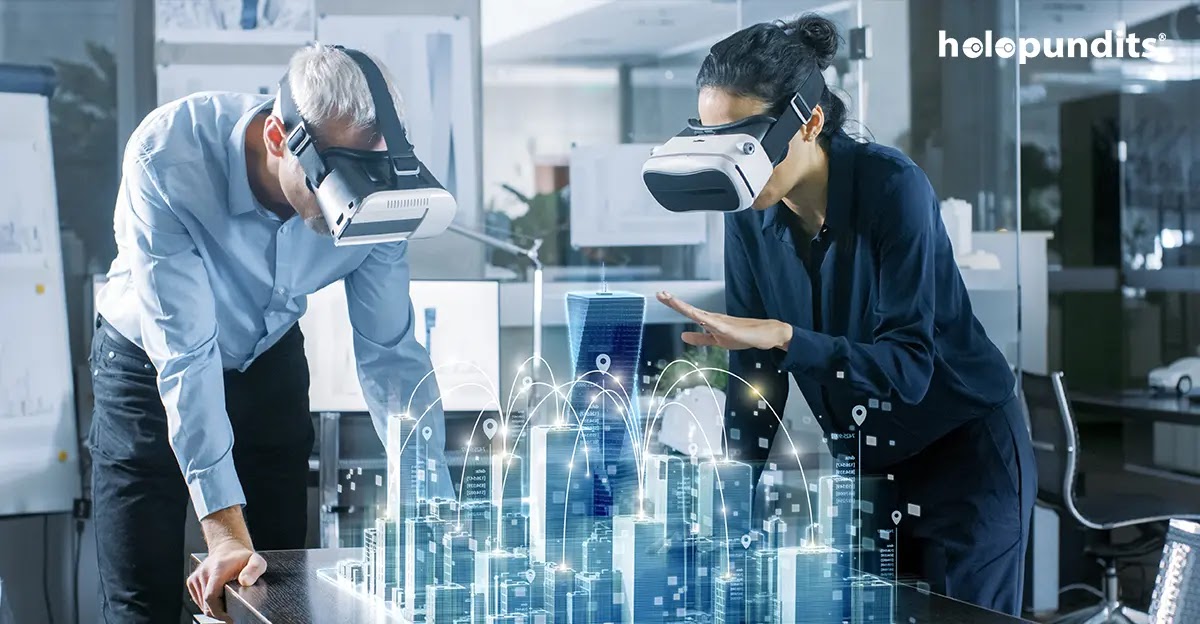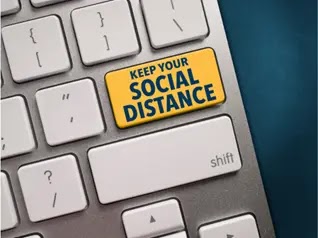Top 14 Industries That Use Virtual Reality Applications to Redefine User Experience
Virtual reality is an exciting and under-appreciated technology that has been the talk of the town ever since the world was taken hostage by the Covid-19 virus. Usually, people associate Virtual Reality with gaming and entertainment. But that is not the only scenario. Listed below are 14 industries that are already using Virtual Reality in the last decade to leverage VR's ability to create an immersive environment and redefine user experience.
Top 14 Industries Employing Virtual Reality Applications to Engage Users
Here is the list of high-traction industries utilizing Virtual Reality:
Now, let us look at some use cases of Virtual Reality applications in each of these industries.
1. VR in Architecture

Architects are using VR to be on the same page as their clients, thereby resolving problems before they arise. The conventional methodology of creating blueprints and scanning or faxing them to the client for approval is slowly fading away. While prospects could only view 2D versions of buildings in the earlier blueprints, they can now visualize end-to-end growth and have an exploratory view of their buildings in real time. Since real world assets are not involved, any remodeling is virtually carried out easily without having to construct models or objects in the real world. The Oculus Rift enables architects to visualize their buildings along with scale, which would not have been possible so far with a traditional monitor.
2. VR in Education

Virtual Reality can dramatically enhance education and improve student success outcomes by creating an immersive learning experience. Such immersive experiences facilitate accelerated learning by engaging both left and right brain hemispheres. While the left hemisphere relates to logic, reasoning, and analytical tasks, the right hemisphere is associated with tasks that require emotional intelligence, creativity, artistic, and the like. Virtual Reality engages both hemispheres and provides a holistic learning experience. Schools and other educational institutions are using VR to simulate and present hazardous scenarios without the associated perils. VR has resulted in multiple benefits of cost, time, and technique for both the teaching as well as the learning community.
3. VR in Military
The military life is fraught with life-threatening scenarios. Enter VR to help the military to simulate such scenes without jeopardizing their lives. The military is already using Virtual Reality to create dangerous situations and train their teams. VR is used to create an extreme environment like enemy territory, hostile jungles, and the like, for the army. VR is also used to simulate a vehicle experience. Instances include helping a soldier train to handle a fighter plane, submarine, or tanks. Last but not the least, VR also helps medical personnel within the military to get trained on what help they can provide to teams in the event of any casualty.
4. VR in Mental Health
Mental health professionals worldwide have begun to appreciate the synergy that VR can provide in diminishing pain, steadying nerves, and boosting mental health. Coupled with the ability to be administered across any distance, application of VR in mental health is a win-win situation for both the doctor(s) and the patient(s). VR creates a psychological cushion for the patients by providing an immersive ambient experience. Such a kind of therapy is termed as a Virtual Reality Experience (VRE). VRE-based therapies have been recognized by hospitals to have positive effects on patients and provide a calming effect on patients' minds.
5. VR in Medical Training
The medical industry is using Virtual Reality to train themselves as well as check their competence before operating on any patient. Medical training has become relatively easy for the health professional community, thanks to the application of Virtual Reality. VR in medicine can be customized to suit individual and collective, organizational requirements. Some of the sub-fields within medicine that use VR applications include physiology and anatomy, neurosurgery, ENT, and cardiology. Combined with Augmented Reality, the implementation is providing a paradigm shift to medical practitioners.
6. VR in Retail

Retail is the backbone of business. VR is used to plan, design, research, and add immense value to the ultimate user - the consumer. The main benefit is to provide a paradigm shift in aesthetics by establishing a fun shopping cart experience, which in turn, propels business development. So, it is a win-win situation for both the retail service provider and the customer. VR in retail can redefine the way we experience a product or service virtually before purchasing it. One fascinating example of VR in retail is IKEA's Virtual Reality based kitchen experience where the user can check out a virtual kitchen to decide what's in store!
7. Learning & Development (L & D) using VR
It is well known that we learn by doing things and actively involving with our training materials & pedagogy. With gestures incorporated within VR, the L & D industry aids quicker retention through interaction with their learning environment. The learning and development industry is also using VR to evoke emotional intelligence skills like empathy, compassion, and shared decision-making. An example of Learning and Development using VR is a Job Simulator game play shown below.
Are you stunned by the above applications of VR in industry? This is not all. Here are some more use cases of VR applications which will blow your mind!
8. VR in Tourism
Ever since Covid-19 started, if there is one singular industry that took the hardest hit, it is the tourism industry. With people forced to be in quarantine, lockdowns, and maintain social distancing, tourism has come to a standstill. While one cannot physically travel places, people still feel the need to explore new places & destinations and get out of their monotonous way of life. Virtual reality offers tours and experiences wherein people can stay at their place yet move out virtually and travel anywhere in Earth and beyond. Samsung's VR lunar experience created along with NASA allows anyone to explore the lunar surface. If the world would take some time to return to normalcy, VR is touted to be the future of the tourism industry. Some tourist "trips" are the Atlantis Dubai Tour, the Hamilton Island tour in 360-degree video within VR, and a trip to the Maldives island to name a few.
9. VR in Professional Learning
With micro-sized learning modules and robust assessments, VR in specialized learning is breaking barriers in continuing professional development. As training updates are provided on-the-go, professionals & specialists can speed up their learning as and when new features are made available for them. This will help professionals to keep themselves updated on the latest certifications and accreditations and ensure that they are on the bleeding edge of technology. According to a 2020 study by PWC, VR helped professionals learn up to 4 times faster than their non-VR-using counterpart learners.
10. VR in Automotive

Engineers as well as technicians can directly interact with prototypes using Virtual Reality. For example, using a vehicle's simulation is easier and cost effective than using a physical model of an engine or chassis. The same simulation can be shared with multiple users (testers, technicians, and designers). Any user can visualize multiple scenarios and use-cases before finalizing any one or multiple products and moving it to production. Virtual reality in automotive plays the role of a sandbox environment. As per Fortune Business Insights, the automotive market in the US alone is expected to multiply ten times the size it was in 2020. Virtual reality in such an increasing market can sizeably decrease the costs involved in training, which is one-quarter of the entire VR market share in automotive sector.
11. VR in Design
Applying VR in design is akin to playing God in creating a virtual landscape. So far, when any building or object is being designed, it is being done by designers or graphic content creators who may not be the end user. However, VR in design has the potential to put the power of visual creation in the hands of the end-user to create something which is customizable and individual oriented right from the start. Today's world requires people to interact in digital and virtual environments as much as real ones. Having VR in design would only empower us to create empathetic environments which people can connect to, in a real sense.
12. VR in Marketing
Though marketing is often quoted to be a hyped-up aspect of business development, Virtual Reality based marketing enables marketing to live up to the hype. Marketing's oldest formula of AIDA - Attention, Interest, Desire, and Action is fulfilled by a Virtual Reality model. Some instances where VR has been successfully deployed in Marketing are the VR tour of All Nippon Airways' 'The Room,' a cheesy journey of the soft cheese supplier Boursin into how cheese is made, and Framestore VR studio's Trailscape VR experience which allowed users to walk and explore the mountainside within a VR environment.
13. VR in Events and Conference
As almost all the events and conferences scheduled in 2020 were cancelled, Virtual Reality finally found its spotlight to enable events and conferences. Some of the events that happened over Virtual Reality are the first Educators in VR summit, HTC's annual Vive Ecosystem Conference (VEC), and Digital Hollywood. With Covid's presence still felt, many more organizations are likely to move to a VR-based event style.
14. VR in Gaming

VR has been readily associated with the gaming industry for a while now. So, it is no surprise that VR continues to be used heavily in the gaming segment. Current days' VR headsets have made huge headways on the historical lag and nauseating conditions associated with VR gaming. Some of the popular games that have made a huge hit in the VR segment include Half-Life and No Man's Sky. Both involve active participation from the users' side, which is fulfilled by VR greatly and provides an enthralling experience for the gamers.
Concluding Thoughts on Virtual Reality in Industry
Hope this article was both informative as well as entertaining to read. The list above of 14 industries using Virtual Reality is not exhaustive, but rather illustrative of the ways in which VR applications are already being utilized. Due to the Covid-19 pandemic, the future of work seems to be leaning toward the remote direction. In such circumstances, it is noteworthy to mention that Virtual Reality applications have a lot of scope to create dynamic, engaging, and holistic experiences for all stakeholders.



Comments
Post a Comment